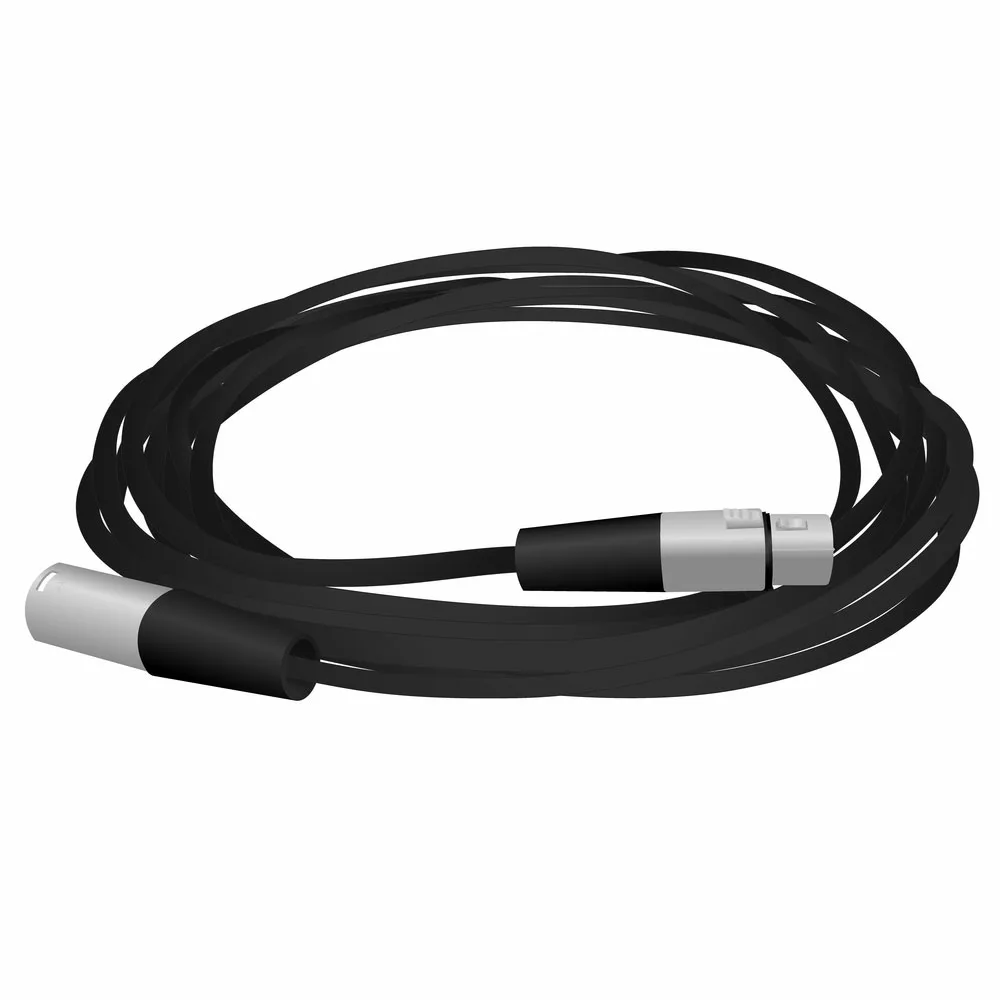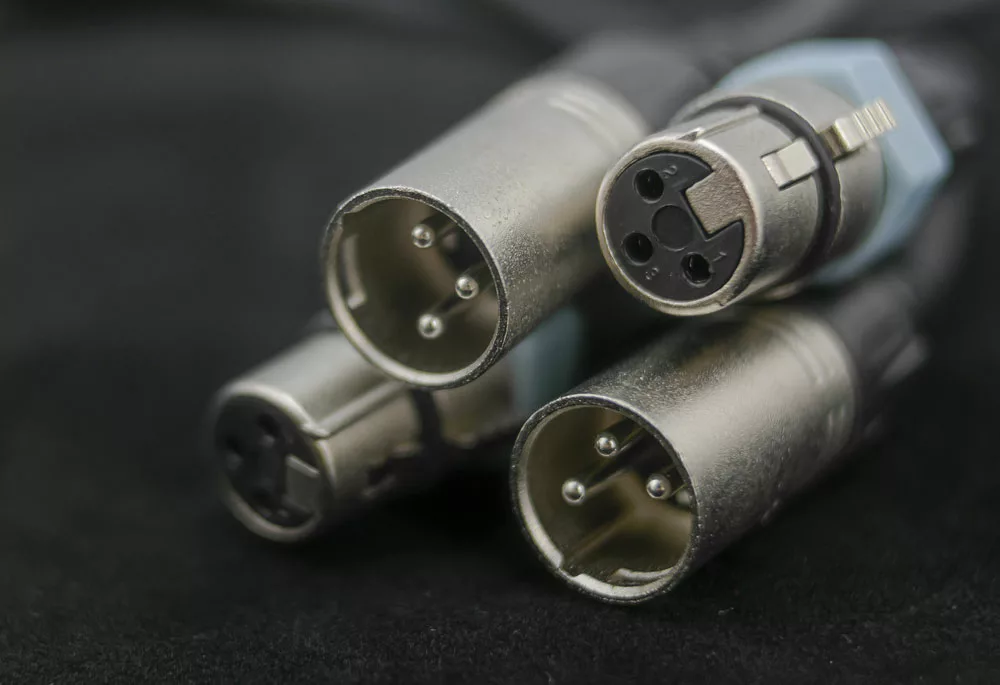If you are a gifted gaffer or a foley artist, there are high chances that you have dealt with a lot of power cables. And whenever you fell short of cable, you tried using a DMX cable in your audio rig (XLR) and vice versa. The general belief is that you cannot mix XLR and DMX cables; however, some professionals believe there is no problem. The cables have similar sizes and connectors and come in different colors. So, can I use DMX cable for audio?
Table of Contents
- XLR vs. DMX: basics
- XLR connectors for audio application
- XLR connectors for DMX lightning application
- XLR Vs. DMX: what’s the difference?
- Can I Use a DMX cable for audio, or Can I use XLR audio cable for DMX?
- Conclusion
XLR vs. DMX: basics
XLR stands for External Line Return, a type of connector you may find in audio and lighting cables and equipment. On the contrary, DMX stands for Digital Multiplex, a standard protocol for transmitting information between lighting desks and different lighting and special effect equipment.
None of the XLR and DMX cables are actual cables. However, for simplicity, people refer to XLR as microphone cables and DMX as lighting cables. The acronym XLR can refer to XLR cables, an XLR connector, or even any audio cable. However, DMX relates to something specific. Sometimes, people call microphone cables XLR even if they also feature other audio connection types. Though DMX cables use XLR connectors, they have some specific use, and thus they got a different name.

Caption: XLR cable
XLR connectors for audio application
You use XLR cables with audio equipment like mixers, microphones, soundboards, or amplifiers. There are several varieties of XLR connectors in the market; however, the common one is the 3-pin version. The three pins are meant for positive, negative, and the ground. You can use XLR connectors with more than one pin if you need additional signals.
Most cables use XLR connectors on both ends. However, cables having other formats such as RCA, ¼”, SpeakOn, and 3.5mm are also compatible with XLR, and thus XLR is an ideal choice for connecting different input/output devices.
Some devices do not have an XLR port; in that case, they can use a mini XLR port instead. This port has a smaller shape with similar functionality to standard XLR.

Caption: XLR type male and female connectors
XLR connectors for DMX lightning application
In the 1980s, cable designers designed DMX cables based on XLR technology for music lighting systems. A DMX lightning cable looks similar to an XLR audio cable when viewed from the outer side. And the DMR cables also have a 3-pin version as the most common one. However, its 5-pin version is also widespread. Initially, experts thought that the 5-pin DMX connector would work similarly to the 3-pin, and electricians could use extra two pins whenever required. However, technicians failed to use those two extra pins over the years. As one rarely uses two extra pins on a 5-pin connector, DMX cables in the market leave them unconnected and come with wires attached to three other pins. Due to this similarity, there are connectors that you can use to go from 5-pin to 3 -pin and vice versa.
The layout and size of the pins make a 3-pin and 5-pin DMX connector different. Also, you must note that 5-pin DIN connectors resemble 5-pin DMX connectors; however, they are neither the same nor interchangeable.
XLR Vs. DMX: what’s the difference?
Let’s study these two cables in detail and bust the related myths.
Cable itself
The difference between the XLR audio and DMX cables is in the cables themselves. How well the information gets transmitted depends on the impedance, shielding, and capacitance. Capacitance describes the energy or signal absorbed by the cable, impedance describes the cable’s reflections and distortion, and shielding helps protect the signals from noise and electromagnetic and radio frequencies.
XLR audio cables have high capacitance, low impedance, and strong shielding, which is suitable for analog signals as they are not affected by impedance and capacitance. Still, they need strong shielding to protect themselves from external interference. On the other hand, digital signals are susceptible to voltage changes. Any voltage changes in the cable can affect the line of information of digital signals or may also corrupt the signal. Digital data also gets affected by the signal reflections coming from the cable ends and may get distorted.
When XLR cables work for DMX data, there are chances that the signal may not reach in one piece, especially over long distances. Thus, you need special DMX cables with low capacitance and high impedance (120 ohms). These features match the DMX signal characteristics and protect it from data corruption. Similarly, if you use DMX cables for sending analog signals, the difference in impedance, capacitance, and shielding will result in increased noise and inconsistent data.
Connectors used
Microphone cables have been using 3-pin XLR connectors since 1955. In 1986, technicians had two cables for lighting and audio and extra data wires. Besides the number of pins, there is no significant difference between XLR connectors used in audio and lighting cables.
The price of peace of mind
As DMX cables need different materials to meet a specific standard, these cables are more expensive than XLR. Thus, XLR audio cables are the preferred cable choices for newcomers.
Can I Use a DMX cable for audio, or Can I use XLR audio cable for DMX?
The answer is YES. You can use DMX cables for transmission audio and XLR cables for transmitting DMX.
However, there are chances that XLR cables can result in light flickering and DMX cables can distort the sound. Further, if you mix these two cables, it will be difficult for you to separate them without looking at both cables carefully. So, it is better to save yourself from this hassle and choose the suitable cable for your job to avoid getting into troublesome situations.
Conclusion
XLR and DMX cables overlap; thus, it is difficult to separate them. The inner differences lead to changes in their functionality. Get these cables from Cloom at the lowest prices. We are a leader in manufacturing high-quality cables and wiring assemblies.
